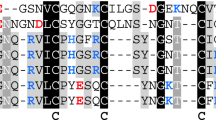Abstract.
Hirudin is a potent thrombin inhibitor originally derived from the medicinal leech, Hirudo medicinalis. Owing to its high affinity and specificity for thrombin, hirudin has been intensively investigated for research and therapeutic purposes. The investigation of hirudin has contributed greatly to the understanding of the mode of action of thrombin and the clotting system. Hirudin and several hirudin analogues have also been demonstrated to have several advantages as a highly specific anticoagulant over the most widely used drug, heparin. Due to the great demand for hirudin in physicochemical and clinical studies, various recombinant systems have been developed, using bacteria, yeasts, and higher eukaryotes, to obtain the biologically active hirudin in significant quantities. After 10 years of clinical applications, two recombinant hirudins and a hirudin analogue have gained marketing approval from the United States Food and Drug Administration, for several applications. Clinical trials are currently ongoing for other treatments for thrombotic disease. As a consequence, it is conceivable that hirudin may expand its therapeutic utility over heparin in the near future.
Similar content being viewed by others
Author information
Authors and Affiliations
Additional information
Received revision:14 September 2001
Electronic Publication
Rights and permissions
About this article
Cite this article
Sohn, .J., Kang, .H., Rao, .K. et al. Current status of the anticoagulant hirudin: its biotechnological production and clinical practice. Appl Microbiol Biotechnol 57, 606–613 (2001). https://doi.org/10.1007/s00253-001-0856-9
Received:
Accepted:
Issue Date:
DOI: https://doi.org/10.1007/s00253-001-0856-9




